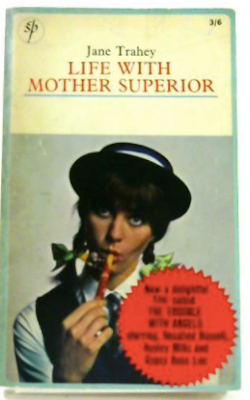I haven't written in over a week because I've been too busy reading. Here's a look at a couple of the books in my current reading pile.
In the spirit of the New Year and self-improvement and all that, I decided to check this book out. I've been hearing the buzz around it for a month or so, and I wanted to see if the interior of the book was as confidence-inspiring as the title.
I approach self-help types of books pretty much the same way I approach religion; I take what I can from it to enhance my beliefs, values and purpose in life. The ideas may be helpful and guiding, but the text is not dogma. There are some places where the author's suggestions seem too simple or irresponsible, like quitting your job in order to fulfill a dream. I think that's everyone's ideal, but most of us wouldn't be able to afford to eat or put a roof over our heads without aforementioned job. But there are a couple chapters that I found more value in.
The next book in my pile is one that I requested over a month ago. Its publication prompted every single fan of Little House on the Prairie to rush out to their libraries and order it. Since I received my copy a couple days ago, there are ten people in line behind me, waiting for it.
I can understand who so many of us are eager to read Caroline Fraser's new biography of Laura Ingalls Wilder. Her books are beloved by generations of readers, and even though we know that she is painting a softer portrait of pioneer life than the historical record shows, her descriptions of simple pleasures like wildflowers and wading in creeks on hot summer days remind us that we should take time to connect with nature and appreciate the world around us.
Since the biography is an intimidating tome of information, some of it quite dense and relating to aspects of history I am not particularly well-versed in, I am double dipping and listening to it on audiobook in my car, and reading the print book at other times.
I'm really enjoying Fraser's book because it provides readers (and listeners) with a much more developed picture of the struggles of the Ingalls family, and the characters that we love from the books are presented as round, three dimensional people rather. For example, Fraser broaches the topic of the Civil War, and questions why Charles Ingalls never served. He would have been in his twenties during the war, so he was obviously at a preferred age (rather than too young or too old). He did not enlist in the army, even though his younger brothers ran away to join the cause, and his brother-in-law also served. There is no record of where he lived during those years, so one theory is that he spent that time moving from place to place, in order to avoid the draft. Fraser is able to question our popular perceptions of these saintly characters without slandering them.
The last book is the one I've been able to read the quickest. The Trouble with Angels is one of my favorite movies, but I only recently learned that the 1966 film is based on Jane Trahey's account of her high-school education at St. Mark's school, a Catholic all-girls boarding school. Only one library in our ILL network had the book, and it arrived lacking its dust cover. I assume that since it's a first edition hardcover that its dust cover would have been this version:
The first one is a paperback, and the cover shows the little characters that grace the beginning of each chapter. The second book is clearly a paperback that was released simultaneously with the film based on it.
The third cover I found for this book is bizarre, though:
Though obviously, the movie starring Hayley Mills and Rosaline Russell is not scandalous like the Stanley Kubrick movie.
Anyways, I am pleasantly surprised at how closely the film follows Trahey's writing. The name of the school was changed, along with some of the character names, but many of the other details remained intact.
I have a number of other books in my pile, so I'll be writing another post like this soon.








No comments:
Post a Comment